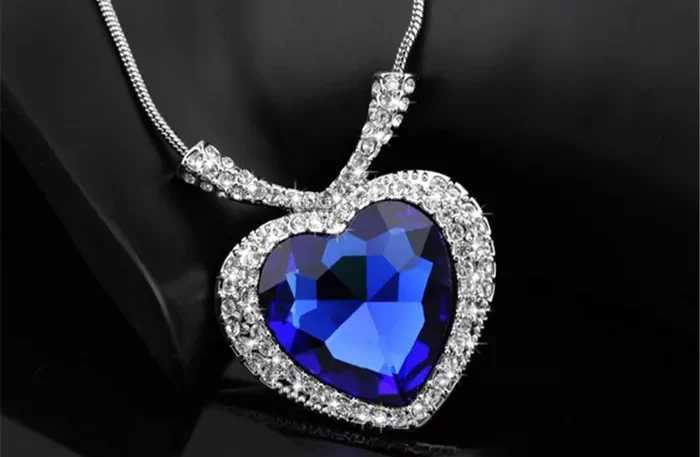Gemstones have fascinated humans for centuries, and among them, sapphires stand out for their beauty and rarity. One particular type of sapphire, the Kasiat yellow sapphire, is renowned for its vibrant yellow hues that captivate collectors and jewelry enthusiasts alike. Understanding the cause of the color in Kasiat yellow sapphires is crucial for gemologists, jewelry appraisers, and anyone interested in these precious gems. This article aims to provide a detailed and accessible explanation of the factors that contribute to the coloration of Kasiat yellow sapphires, drawing on insights from gemological research and professional appraisal practices.
The Basics of Sapphire Coloration
Before diving into the specifics of Kasiat yellow sapphires, it is essential to understand the basics of sapphire coloration. Sapphires, like rubies, belong to the corundum family of minerals. The color of corundum gems is primarily influenced by trace elements present in their chemical composition and the way these elements interact with light. The most common color-causing elements in sapphires include iron (Fe), titanium (Ti), chromium (Cr), and vanadium (V).
The Role of Trace Elements in Coloration
In the case of Kasiat yellow sapphires, the color is primarily attributed to the presence of specific trace elements. While the exact composition can vary, yellow sapphires typically owe their color to combinations of iron, titanium, and nickel. Iron is a common impurity in corundum and is responsible for the yellow, green, and orange hues found in sapphires. Titanium often works in tandem with iron to enhance these colors. Nickel, on the other hand, can contribute to the development of a more intense yellow or even a greenish hue.
The Influence of Chromium
Chromium is another element that plays a significant role in sapphire coloration, albeit less commonly in yellow sapphires. Chromium is more famously associated with the intense red hues of rubies. However, in certain yellow sapphires, chromium can be present in trace amounts, contributing to the gem’s overall color. Chromium’s influence on sapphire coloration is complex, and its presence can result in a range of hues, from pale yellows to deep oranges.
Color Center Formation
Another factor that can influence the color of Kasiat yellow sapphires is the formation of color centers within the gemstone. Color centers are defects in the crystal structure of the mineral that absorb light at specific wavelengths, resulting in the gemstone’s observed color. These defects can be caused by natural radiation or artificial treatments, such as heat treatment or diffusion processes.
Natural radiation, for instance, can create color centers in sapphires as they form in the Earth’s crust. These color centers can be unstable, leading to changes in the gemstone’s color over time, especially if exposed to intense light or heat. This phenomenon is known as fading or bleaching and is particularly common in sapphires with color centers caused by radiation.
Artificial treatments, such as heat treatment, can also create or enhance color centers in sapphires. Heat treatment is a common practice in the gemstone industry and is used to improve the color, clarity, and overall appearance of sapphires. By heating the gemstone to high temperatures, the crystal structure can be altered, causing color centers to form or become more prominent. This process is generally considered stable and does not result in fading over time.
Diffusion processes, on the other hand, involve introducing foreign elements into the sapphire’s crystal structure to create or enhance color centers. Beryllium diffusion is one such process commonly used to treat sapphires. In this method, beryllium atoms are introduced into the sapphire under high temperatures and pressures, causing them to diffuse into the crystal structure and create color centers. This treatment can result in vibrant, consistent colors that are often more intense than those found in naturally occurring sapphires.
The Impact of Treatment on Appraisal
When appraising Kasiat yellow sapphires, gemologists and jewelry appraisers take into account the gemstone’s color, clarity, cut, and carat weight. However, the presence of treatments, such as heat treatment or diffusion processes, can significantly impact the gemstone’s value.
Naturally occurring sapphires with intense, well-saturated colors and good clarity are highly valued and can fetch high prices on the market. Treated sapphires, while visually appealing, generally command lower prices due to the artificial enhancement of their color and clarity. This is because treatments can mask natural flaws and imperfections, making it difficult to assess the gemstone’s true quality.
Moreover, some treatments can be unstable and result in fading or color changes over time. This is particularly true for sapphires with color centers caused by natural radiation or artificial treatments that are not stable. In such cases, the gemstone’s value can depreciate significantly, as the color change can detract from its overall appearance and appeal.
Conclusion
In conclusion, the color of Kasiat yellow sapphires is a complex interplay of trace elements, color center formation, and potential treatments. Understanding these factors is crucial for gemologists, jewelry appraisers, and anyone interested in these precious gems. By recognizing the role of trace elements such as iron, titanium, and nickel, as well as the impact of color center formation and treatments, one can gain a deeper appreciation for the beauty and complexity of Kasiat yellow sapphires.
Related topic:
- Laboratory Cultivation of Yellow Sapphire Quality Is Reliable?
- How Does the Color of Lab-Grown Yellow Sapphire Come From?
- What Is the Cause of Orange Sapphire Color?


